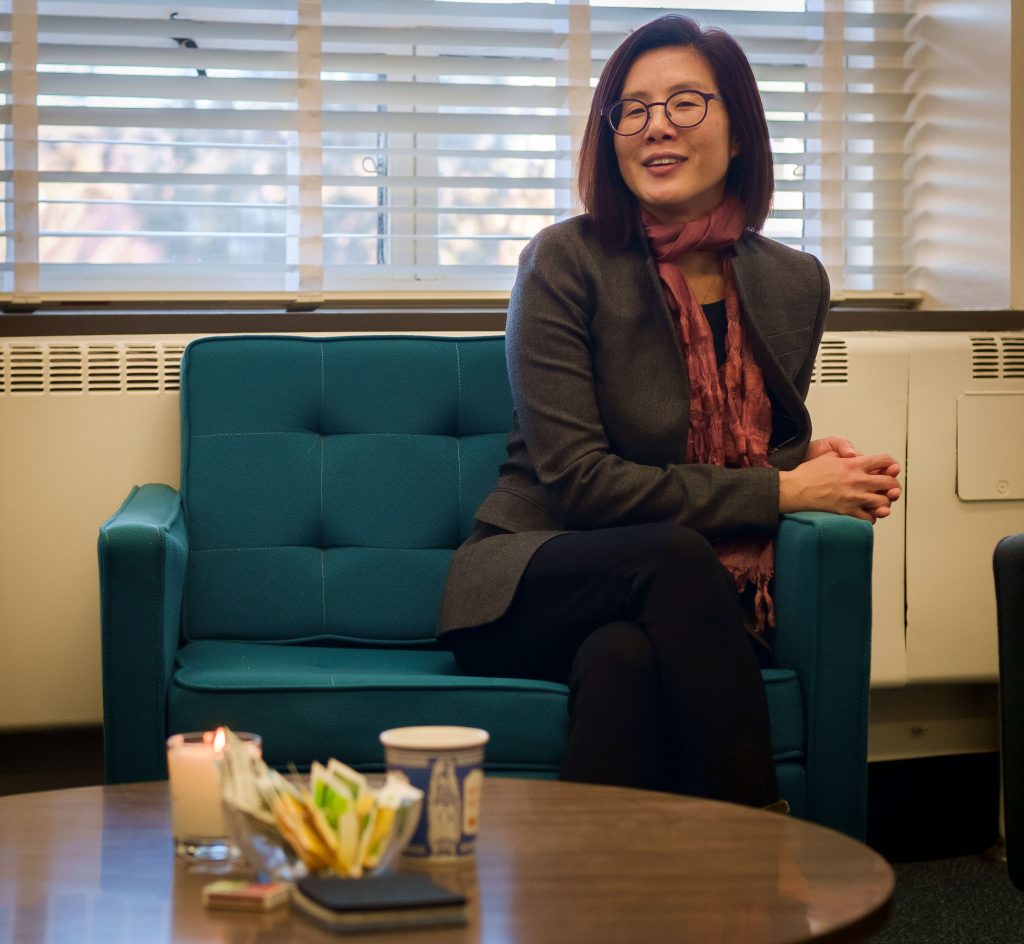
When she’s not teaching about the history of the world through artifacts, Binghamton University professor and art history department chair Nancy Um is a student herself.
“A few years ago, I attended a workshop entitled ‘Digital Art History,’” Um said. “Essentially, it’s a lot of people who are doing work in art history, in comparative literature and history using computational tools. Art historians used to look at a painting and write about it, but now we’re realizing that there’s all these cool ways to think about history — to think about art history. It’s just about embracing technology for a new view of the humanities.”
Um has applied what she’s been learning both to her own studies and her work with students inside the classroom. In her course from fall 2017, “ARTH 282A: Art of India in the Age of Jahangir,” rather than assigning a final paper, Um had students compose a map using online tools. She said her goal was to help expand their understanding of the material within a geographical context and how to utilize computational tools in a humanities class.
“I’m really interested in the possibilities technology holds for people who are not necessarily science people,” Um said. “I’m now asking students to produce digital maps as their final projects using various software. Last semester I had students using this tool called Google Fusion Tables. This semester I’m having students use something called Story Maps. It’s really great because then they get to use a map that they can use to tell a story about art and architecture, which have a very important spatial dimension.”
Beyond her pursuit to become a better educator through technology, Um continues to immerse herself in her own research, applying her new arsenal of tech skills to explore her subjects.
“When you have five objects in front of you, you can kind of understand what they are,” she said. “When you have a hundred, making sense of them to me is big data. I’m beginning to use data-analytical methods to think about collections of objects, to try to understand them better.”
Um’s interest in art history started in high school after she took an introductory art history class. She decided to pursue the subject in college.
“I tried other majors and none of them worked for me,” she said. “Once I got my feet wet [in art history], I knew there was only one major for me.”
During her undergraduate career, she studied abroad in Egypt. Um said she was drawn to the country because of its unique culture and rich historical roots.
“Egypt is interesting because there’s ancient Egyptian culture and they also have a rich Islamic history,” Um said. “You can do a lot in art history there. I really knew nothing about Egypt. I knew I didn’t want to go where most art historians went. I just knew that I couldn’t stop there, and that led to the next step, and the next step … I know it’s comforting for some students to have a grand plan, but if you have something that’s enough to spark you to move onto the next stage, you probably should do it.”
Um’s current research is rooted in Yemen, a country on which she’s published two books. Um’s latest publication, “Shipped but not Sold: Material Culture and the Social Protocols of Trade during Yemen’s Age of Coffee,” came out last year. The book explores the relatively underrepresented history of Yemen and its rich history of trade and culture.
“[‘Shipped but not Sold’] was a pleasure to write,” Um said. “That was kind of the book I wanted to write. I was given a great fellowship to go to the Getty Foundation in Los Angeles. That was a one-year fellowship where I just got to spend one year writing, and that was amazing. It was the most idyllic place to write.”
For Um, BU was a natural choice when she was seeking out a place to work. She said she was drawn to it for its passionate and dedicated historians. The University, she said, has supported her use of innovative research strategies and her pursuit of passing along her knowledge and enthusiasm for learning to students.
“Ever since the beginning [BU has] been a good fit for my particular kind of work, which is interdisciplinary,” she said. “I like to do things that are a little bit off the beaten path. [BU] also has prominent scholars in the art history department whose work I had admired; the idea of becoming their colleague was just a dream. I’ve been very happy here.”


